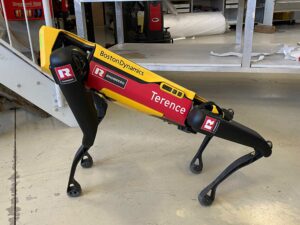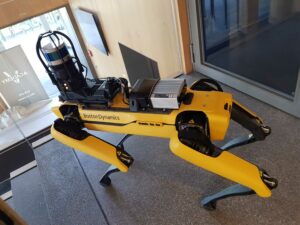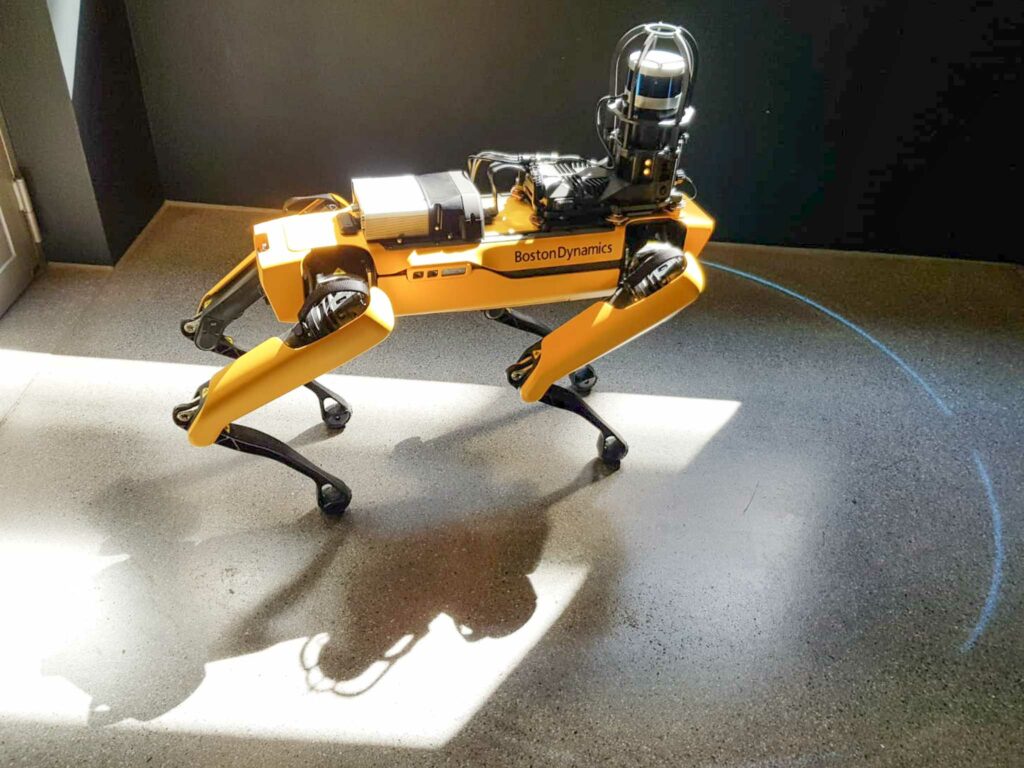Circular Construction
How might we leverage Spot to promote circular design in construction?
About Rhomberg Bau
The Rhomberg Bau Group headquartered in Bregenz, Austria and Zurich, Switzerland, is operating in the construction, resources and railway sectors. The group currently employs around 2800 people and has locations and subsidiaries in Austria, Switzerland, Germany, Ireland, United Kingdom, Australia and Canada. In its construction division, the Rhomberg Bau Group acts as a full service provider and offers solutions and services for all phases of the life-cycle of public and private buildings. The range of services provided by the Rhomberg Bau Group extends from design and project development to (private) housing, public and private sector civil engineering and building through to conversions, refurbishment and the management of real estate and business parks.



Introducing Spot
Our challenge revolves around Spot, a nimble and resistant robot developed by Boston Dynamics. Spot is characterized by a 360° vision (through the HoloBuilder), remote control, and a superior ability to carry payloads. In addition to the advanced technology, Spot provides users with a developer platform lending itself to versatile applications. Customers may use Spot’s mounting rails, payload ports and software development kit to customize the robot and “train” it to perform diverse tasks. Spot is particularly useful in instances that require remote operation and autonomous sensing. For example, it is used in the mining industries to inspect tunnels and ensure safe working conditions, in the oil and gas industry to inspect facilities, but also in the healthcare industry to triage patients, deliver food and medicine, as well as disinfect rooms without involving the human workforce.
New dogs, new tricks
We, as the Rhomberg Bau Group, just got two robot dogs. New dogs, new tricks: Which new tricks can we teach our new robot dogs? The construction industry offers the potential to develop many compelling use cases for Spot from inspecting construction sites, to create digital twins, and much more. It can improve the efficiency of our field operations, offer safer working conditions to field workers, and improve the management of construction materials.
From linear to circular
We are especially excited about using Spot to foster circular design in construction. Circular design refers to the design of products and economic systems allowing resources to follow a reuse and recycle loop. Currently, the value chain in the construction industry is linear. First, private or public entities agree on financing the construction project. Then, architects and technical consultants create the design of the project. Field inspections are required before the actual construction starts. Once the project has been approved a main contractor (construction company) becomes responsible to turn the design into reality. To do so, the main contractor works with subcontractors and direct and indirect suppliers. Sub-contractors are companies responsible for specific construction tasks within the project (e.g. plumbing, heating, air conditioning), direct suppliers provide finished elements to the project (e.g. furniture), indirect suppliers provide the materials needed for construction (e.g. manufacturers of parts, and production of raw materials). When the building is ready, the additional materials and tools are cleared from the construction field, cleaned and handed over to the financers. Then the financiers are responsible to organize maintenance of the building. The construction value chain ends with disposal of the construction materials when the building is teared down and a new construction project on the same land is ready to start.
This linear value chain leads to substantial environmental footprint. The construction industry accounts for 40% of the world’s waste and CO2 emissions and 40% of resource and energy consumption. Therefore, circular design might reduce the construction industry’s environmental impact. Technology can enable a faster transition to circular design. Think about all the steps involved in a construction project. How can we use Spot?
Inspiration questions
Which tasks can Spot take over? Can the robot dogs perform certain jobs better than humans? Can the dog do completely new things?
Can spot help us to maintain the utility of products, components and materials for as long as possible? Could we use the data collected to minimize the need for new inputs of virgin materials and energy? How can we leverage technology to reduce environmental pressures linked to resource extraction, emissions and waste management?
The high complexity of field operations results in frequent losses of tools, lack of overview of materials, mishandling of assets or theft. How can Spot help to get a better overview of tools and materials employed within field operations?
How to use Spot to coordinate subcontractors and suppliers and avoid mistakes and misunderstanding in the delivery of materials and accomplishment of tasks?
How can Spot shift the perception of building materials used in construction from “future waste” to “future resources” and enable new business models?
Spot’s current and potential technological applications may be the basis of several new use-case towards a more “circular future”.
Let’s work together to find new ways to transform the construction industry.
Collaboration incentive
The winning team will receive the opportunity to collaborate with our innovation team on making their idea happen. We offer paid internship opportunities in Austria or abroad and/or supervision of a thesis. The 2019 InnoDays winner from our challenge implemented their project with our mentoring and resource support. One member of our 2018 challenge winner has been a colleague since then.
Security track considerations*
Spot’s data collection capability brings great opportunities to improve materials and resource management on the construction field. This may both benefit the environment and improve the financial performance of construction companies. However, using Spot on construction fields may give rise to potential security threats. Imagine a hacking attack revealing weak spots, what would happen if construction data would end in wrong hands? At the same time, Spot may collect images of people at work, which raises concerns about the privacy and ethical implications that constant control of the workforce may entail.
Boston Dynamics is constantly working on improving Spot’s security and reducing the likelihood of cyber-attacks. Read more about the measures that Boston Dynamics took to avoid privacy and security risks linked to Spot on the general description here: https://www.bostondynamics.com/spot/privacy-notice
And on the Spot Security document https://www.bostondynamics.com/sites/default/files/inline-files/spot-security.pdf
At the InnoDays, we want you to keep security and privacy concerns in mind in order to develop a safe solution that helps Rhomberg achieving its circularity objective without incurring into data mishandling threats.
*For participants from Korea University who focus on the security aspects of the challenge
Sign up to tackle the challenge


